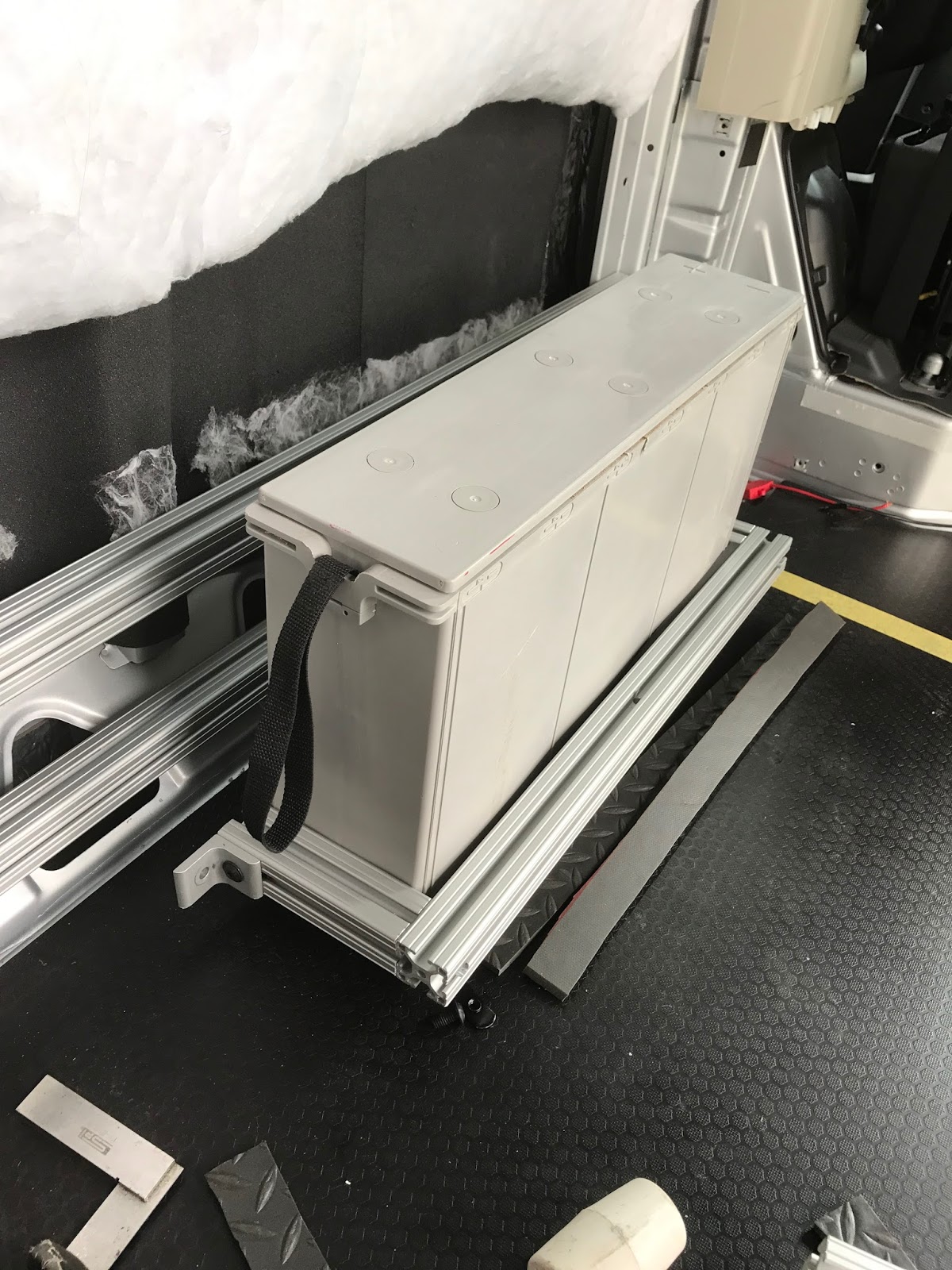Our house battery is an Outback Power
EnergyCell 200NC. This is an AGM (sealed lead-acid, no venting or maintenance needed) 178 Amp-hour battery, which means we have about 90 A-hr of usable power. We originally opted for this slim rack-style battery because we thought we could mount it under the van to save on interior storage space. However, this thing is insanely dense, weighing in at just under 200lb. After having to move it around a couple of times, we abandoned the idea of attempting to successfully mount it under the van and decided to mount it inside instead. Nobody (especially us) would want to have the unhappy experience of a 200lb brick bouncing off the underbody of our van and down the freeway at 70mph.
Luckily, the shape of the battery still allowed us to mount it fairly easily to the van body behind the driver seat, and not lose too much storage space. We managed to find a location where we could use existing holes to bolt directly to the structural ribs of the van. We added thick plates inside the structural ribs to reinforce the flimsy sheet metal and bolted a cage of
80/20 aluminum extrusion around the battery to secure it in place. Strips of foam mat help to protect the battery from rubbing directly on the aluminum.
 |
| Mocking up the aluminum extrusion cage for the battery. |
 |
| The house battery is held in place with a cage of 80/20 aluminum extrusions secured directly to the van's structural ribs. Here, you can see the upper and lower anchors (the horizontal beams of aluminum bolted to the van) which prevent the battery from rotating away from the wall in a crash. |
 |
| We located the house battery on the driver side of the van, far enough back that it will be covered by a cabinet. |
The way we created our cabinets, the battery only takes up the back fourth of one of our storage compartments, and all the electrical connections off the terminals are protected by a plywood wall.
 |
| In the finished cabinet, the battery only takes up a small bit of the bottom right storage area. The terminals face the front (right side) of the cabinet and are protected from wear and tear by the plywood end cap of the cabinet. |




Comments
Post a Comment